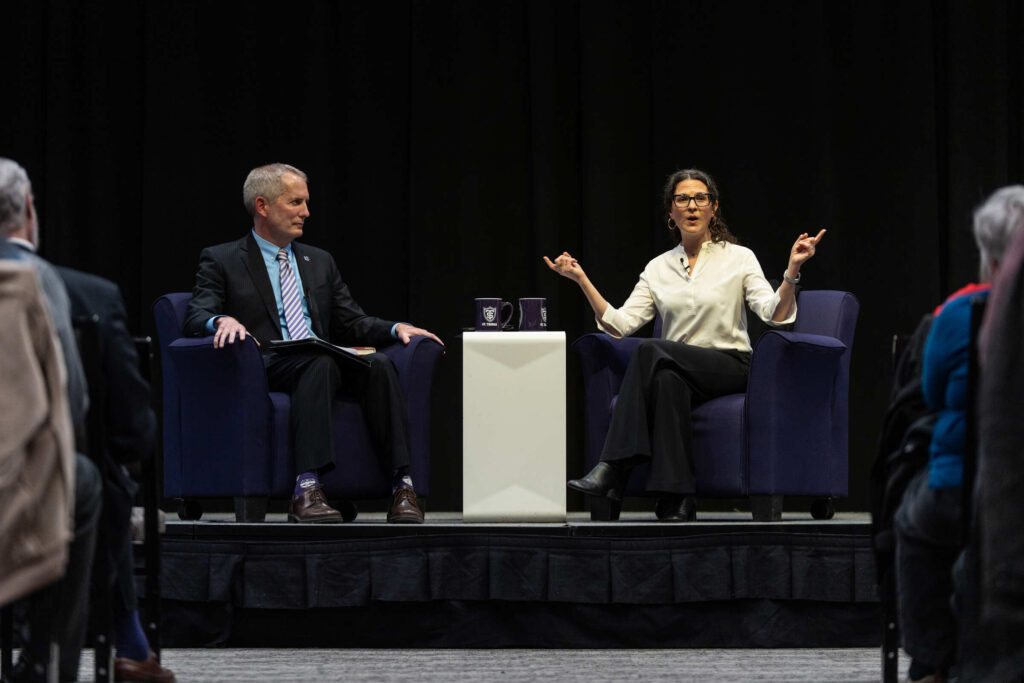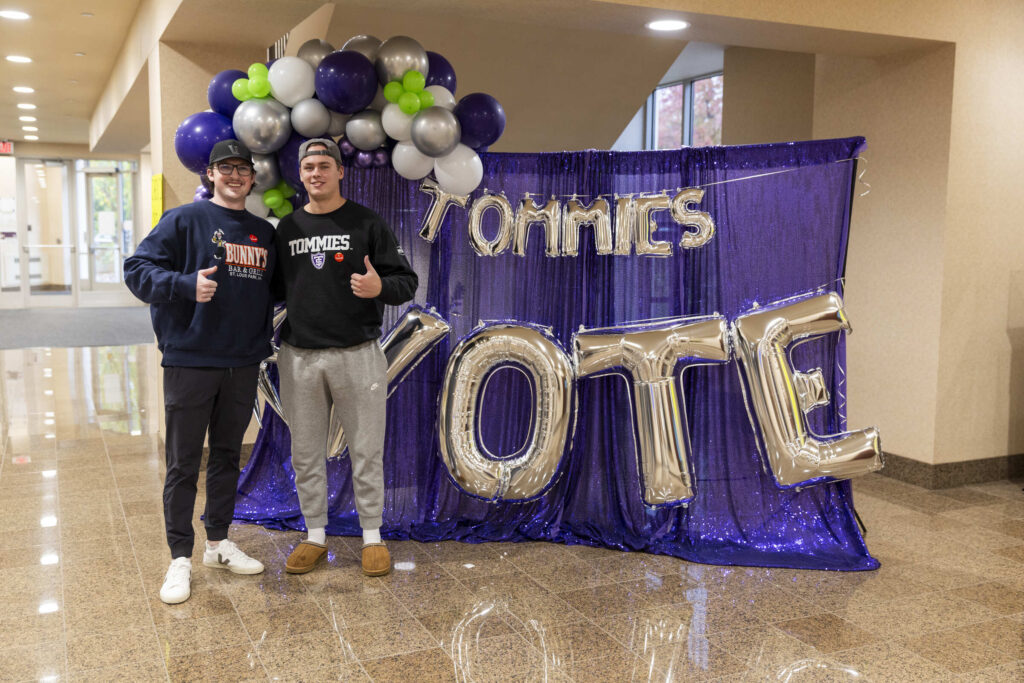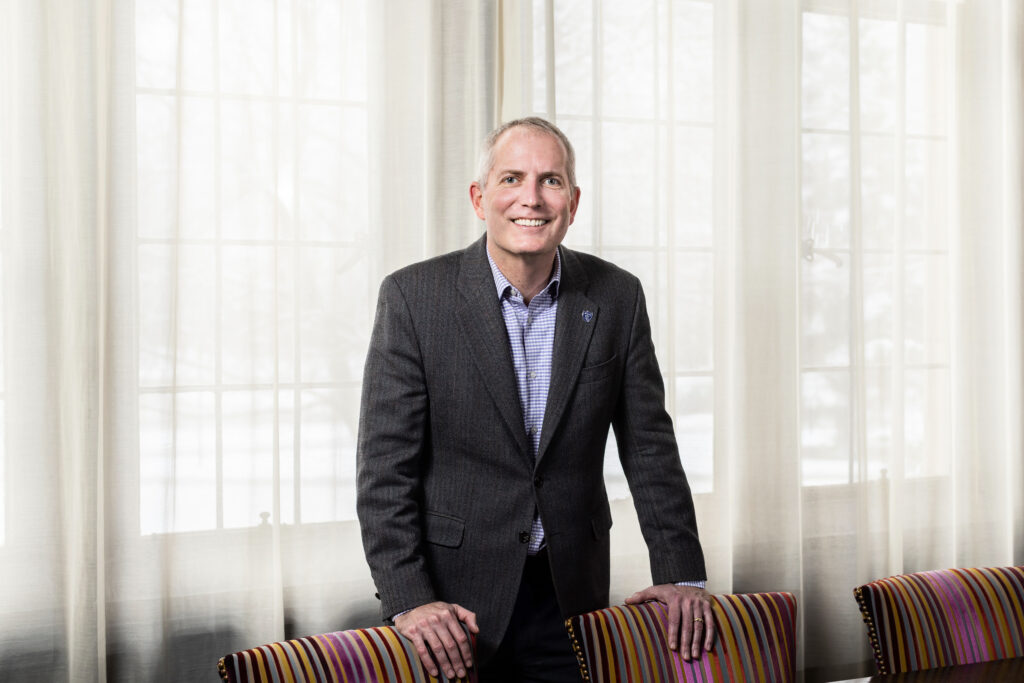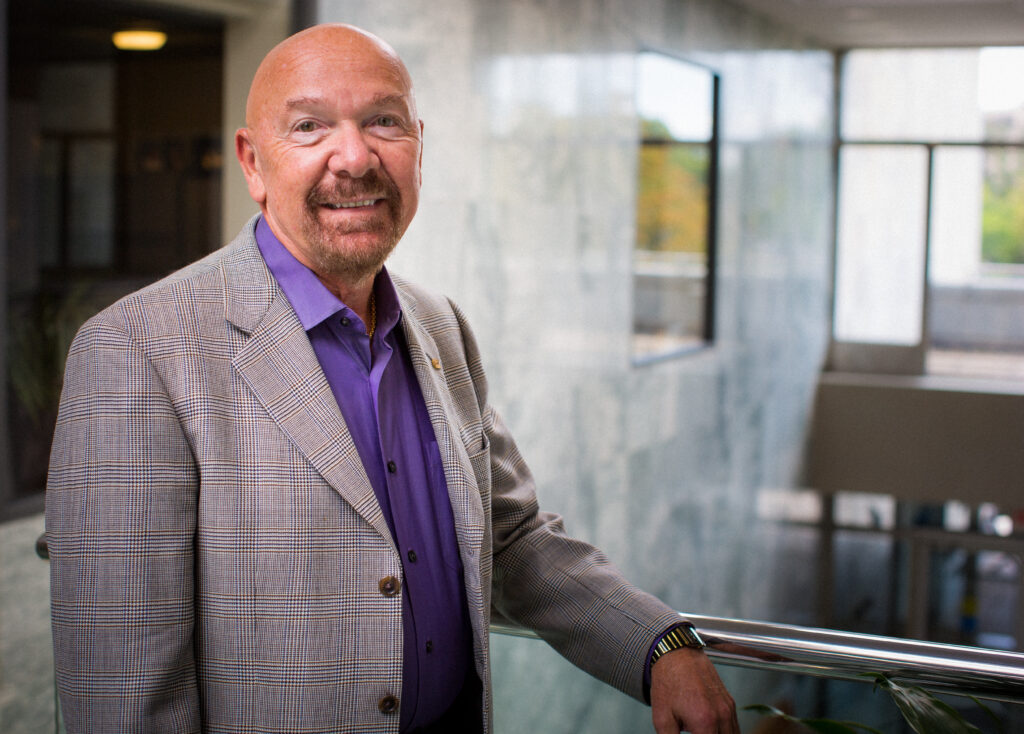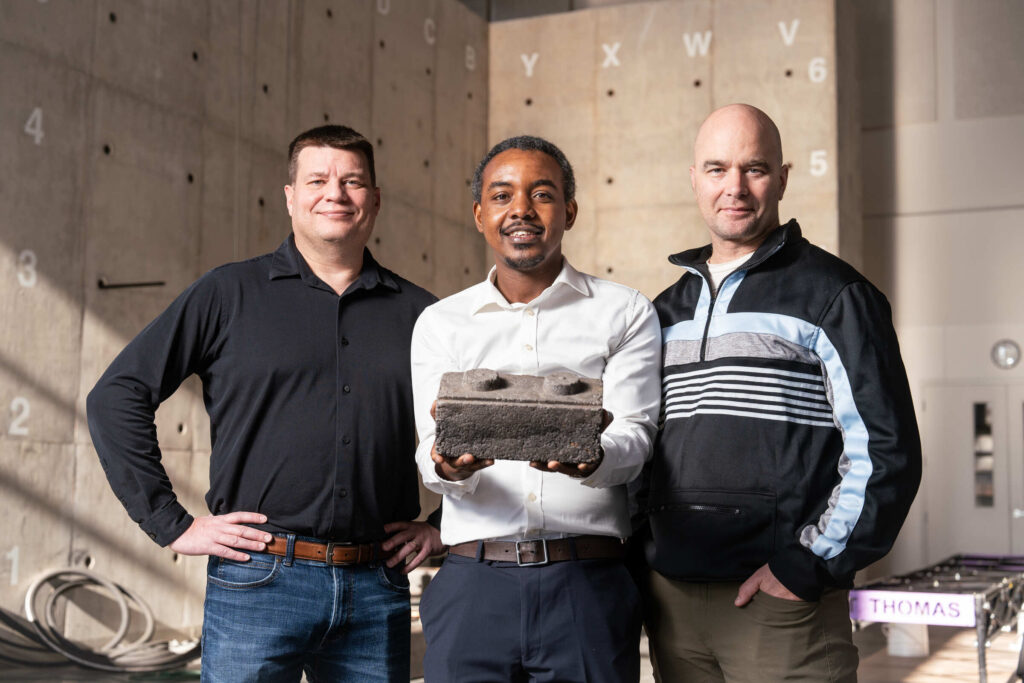Class of 2010 engineering students gather on the steps of Owens Science Hall atrium, where they'll give their senior engineering design show May 12.
From new medical devices to alternative energy generation to improved manufacturing systems, St. Thomas engineering students show off their work in a senior engineering design show from 2:30 to 4:30 p.m. Wednesday, May 12, in Owens Science Hall atrium on UST's St. Paul campus.
The public is invited to this trade show-style event. Refreshments will be available, too. Come talk with the students and learn how they solved some tough engineering problems for companies and nonprofits.
The 78 seniors worked on 18 projects for 14 industry- and nonprofit-sponsored projects. Here’s a peek at what they did:
- Timothy Marrs, Nicholas Leininger, Kayla Pocquette and Phillip Brick worked on designing a scan head for a laser for LasX Industries Inc., a St. Paul company that delivers high performance industrial laser systems.
- Stephanie Behrns, Alexander Gabriel, Andrew Gikling and William Neve also worked on a project for LasX, designing and developing a high-precision, dynamic machine vision system. The company uses these to find part locations and then accurately laser cut the parts. The team’s biggest challenge was to step outside the realm of electrical engineering and into optics design and sophisticated image processing.
- Ryan Chapman, Nicholas Shannon, Brett Mernin, Milo Oien-Rochat and Nicholas Peterson created a cooling structure – without traditional refrigeration systems – to hold 15 tons of seed potatoes and enable the formation of a seed-potato industry in Borko, Mali. Three team members traveled to Borko in January to test it.
- Timothy Tursich, Hans Drabek, Christopher Davis and Olivia Smith worked to develop a device for a pavement-groove sensor for 3M, which developed a line of adhesive tape that is an alternative to the white and yellow paint traditionally marking roads. But snowplows often rip the tape off the roads. So small grooves cut into the road surface hold the tape. But if they’re cut too shallow, the problem remains, and if the grooves are too deep, money is wasted. The team’s mobile groove-sensing device continually displays depth information and GPS position on a touch screen.
It's a lawn mower frame ... no wait. It's a pavement groove sensor. That's what it is.
- Brian Schmitt, Michael Boston, Nathan Drude, Jed Jenkins and Clarence Schaack also worked on a project for 3M. Over the past year, they designed a new-and-improved Retroviewer, a handheld 3M devise used to visually authenticate official documents ranging from packaging labels to passports.
- Joseph Edison, Scott Plooster, William Johnson and Karl Ganske worked on a project for Metamodix, a Twin Cities-based medical device company focused on metabolic disorders. The team helped to develop a removable duodenal implant, tiny enough to be delivered through an endoscope, used for the treatment of obesity and diabetes.
- Timothy Flesch, Jacob McAlpine, Craig Spande, Andrew Snedden and Brandon Turek-Krengel worked to design and create a prototype to demonstrate a Natural Thermal Electricity Generator, a heat-pipe system for Lockheed Martin, a global security and technology company based in Bethesda, Md. The application converts energy from heat to create electricity.
This student team designed a heat-pipe application that converts energy from heat into electricity.
- David Erstad, David Riley, Nicholas Greczyna, Thomas McCulloch and Kyle Rogers sought to develop an alternative to the traditional wind turbine for Lockheed Martin. The concept? Use the vortex shedding from a flag flapping in the wind to produce a force that can be transformed to usable energy.
- Kylie Bennett, Jacob Dahle, Brian Johnson and William Schwalbach worked on a project for Future Force LLC, a St. Paul company dedicated to the production and commercialization of highly efficient magnetic drive systems. The team developed a hydrogen peroxide decomposition system to operate a steam engine. Its future? The assembly would generate electricity with zero pollutant emissions.
- Kevin Barr, John Stark and Nate Sherrill helped develop a more efficient shea-butter mixer for Shea Yeleen International, which organizes cooperatives of rural West African women to produce, market and sell high quality shea butter, which is used in Africa for cooking oil, waterproofing, hairdressing, candle-making and medicinal ointments.
- Katharine Bensen, Nathan Beaudry and Michael Frodl designed a special apparatus for Mate Precision Tooling. It can be retrofitted to an existing punch press assembly to test “strip-miss,” which is what happens when a punch unexpectedly gets caught in sheet metal before being violently released. By building an apparatus to simulate what happens here, the company can develop punch presses that stand up to the forces of “strip-miss.”
- Bryan Edlund, Eric Crosby, Matthew Hudson, Anthony Kanozik and Joseph Sunnarbor worked to come up with a retractable, adjustable windscreen design for a motorcycle for Polaris Industries, the Minnesota manufacturer of snowmobiles, motorcycles, ATVs and personal watercraft. Some of the project’s requirements? It had to look good and be adjustable with one hand while riding, as well as not infringe on any existing patents.
- William Cooke, Isaac Jensen, Andrew Carlson, Alexander Peterson worked on a project that could mean happier riders of Polaris Industries’ Victory motorcycles. The company knew some Victory owners were dissatisfied with the level of effort they had to use to engage the motorcycle’s clutch. So the students designed a belt to power the clutch cable.
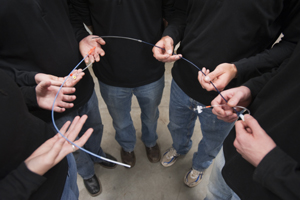
- Student designers show off their introducer sheath for femoral artery surgery.
- Benjamin Haselman, Sara Lais, Matthew Olson, Robert Schulzetenberg and Benedict Skemp, working for Cardiovascular Systems Inc., a St. Paul-headquartered medical devise developer, designed an “introducer sheath” for inserting a device used to treat Peripheral Arterial Disease.
- Ndefru Formuluh, Thomas Garske, Kelly Coss, Garrett Nelson and David Lymburn designed a cart to rotate a large, 1,000-pound electrical panel to aid in its installation for Design Ready Controls Inc., a Minneapolis designer of custom control panels.
- Kelli Lais, Isaac Remer, Brian Sames and Morgan Impola created a low-cost flow-meter device for oil-well monitoring for Emerson, a global manufacturing and technology company. Working with Rosemount Measurement, an Emerson division, the students came up with a way to meet the company’s demand for cost containment as well as an accurate, efficient multiphase flow meter.
- Ryan Markwardt, Thomas Hillebrand, Daniel McNamer, David Timm and Daniel Wadell engineered an improved pediatric vein transilluminator for DesignWise Medical, a nonprofit pediatric medical device development company. The device helps clinicians to accurately locate veins in infants and children.
- Peter Douglass, Luis Maya and Paul Knowles, with adviser Dr. Surya Iyer, designed a bike rack for Four Peaks Industries, a Twin Cities start-up company. The company sought a unique and patentable technology. The easy-on, easy-off rack attaches to the car with magnets.
